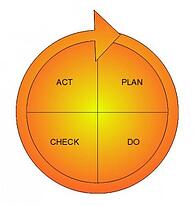Proven Methods for Reducing Manufacturing Costs
Smart manufacturers are continuously looking for more and better ways to reduce production costs. Faster, more precise CNC machine tools aided by robotic-based automation and pallet loading systems are proven ways to boost productivity. However, there’s more to reducing overall production costs than using the latest technologies. For optimum efficiency, manufacturers must consider all aspects of the process from part design to raw materials, machining, quality assurance and delivery to the customer.
According to James P. Womack and Daniel T. Jones in their book “Lean Thinking,” based on the global research they conducted at MIT, manufacturers who develop  comprehensive, lean processes can expect the following results:
comprehensive, lean processes can expect the following results:
- Double labor productivity throughout the manufacturing operation
- Improve throughput times by 90%
- Reduce inventories by 90%
- Reduce scrap and bad parts to the customer by 50%
- Reduce job related injuries and time-to-market for new products by 50%
To make this happen, of course, requires the involvement of design engineers, the manufacturing team, suppliers, purchasing and others. For optimum productivity all departments should work together toward the common goal of developing highly efficient processes that will, in turn, reduce overall production costs.
This means addressing counterproductive policies and cultures. For example, it’s not unusual for companies to have internal barriers to productivity. Sometimes the company’s structure keeps various functions, like design and production, from interacting. This often occurs if the designers are in a physical location apart from the factory, or if each department considers itself autonomous and sets its own objectives and policies. Whenever possible the design engineers should work with the manufacturing team to simultaneously develop a quality product and a streamlined manufacturing process.
On the other hand, if the customer designs the product and presents it to the manufacturer for production, the manufacturer must carefully consider how to perform the machining functions as efficiently as possible. (Gosiger applications specialists work closely with our customers to help develop the best manufacturing schemes by considering all parts of the equation).
Likewise, if purchasing believes that their only function is to obtain the lowest possible cost, Production may end up with inferior equipment and materials that will not be cost-effective in the long term. That’s why it’s important to consider the real cost of ownership of CNC machine tools and accessories, and why Gosiger provides extensive specifications and other data critical to making informed buying decisions.
To learn more, contact the experts at Gosiger.
 |